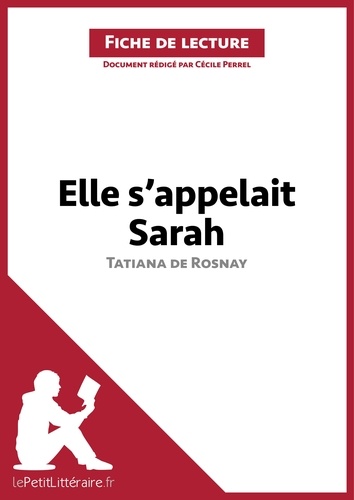


Her parents had never quite told Sarah the nature of the anti-Semitic threat but acting on instinct, she hides her little brother in a cupboard and swears she will come back for him. The story begins in 1942 in an atmosphere of fear and terror as the police knock on Sarah’s door one day to take the family away. Running parallel to Julia’s story in modern day Paris, de Rosnay tells the story of ten-year-old Sarah Starzynski. The deeper Julia digs, the more obsessed she becomes and everything comes to a head when she learns that she is pregnant. As Julia begins to learn more about this event, she begins to uncover some painful secrets that Bertrand’s family had tried to keep hidden for sixty years. As the 60th anniversary of the Vel’ d’Hiv approaches, Julia is asked to write a piece about the events of 1942 and the upcoming commemorations.

Set in 2002, the novel is about an American journalist, Julia Jarmond, who is living in Paris and is married to a Frenchman, Bertrand. In fact, it was only in 1995 that the president Jacques Chirac stated that France needed to own up to their part in the roundups and to acknowledge their complicity with the Germans.Īgainst the backdrop of this momentous event, French author Tatiana de Rosnay has written the fictional novel Sarah’s Key. It was a dark time in France’s history and something that was not spoken about or acknowledged by the French for years. There was no selection process for the children they were sent straight to the gas chambers on arrival at Auschwitz. In the end, all of the men, women and approximately 4,000 children were sent to Auschwitz. Once they arrived at the internment camps such as Drancy and Beaune-la-Rolande, the men were immediately separated from the women and children and then the women were separated too. There were very few survivors of that fateful event in Paris. Quite simply, the Vel’ d’Hiv was part of a greater plan to reduce the number of Jewish people living in occupied France. The action was sanctioned by the Nazis but that level of coordination, identification and organisation would only have been possible with the cooperation of French police and government officials. The families were kept in appalling conditions at the Velodrome d'Hiver before being sent to internment camps within France and finally being sent to Auschwitz.

On July 16 and 17, 1942, the French police began a roundup of 13,152 Jewish men, women and children living in Paris. The Vel' d'Hiv was the darkest hour in France’s involvement in the Second World War.


 0 kommentar(er)
0 kommentar(er)
